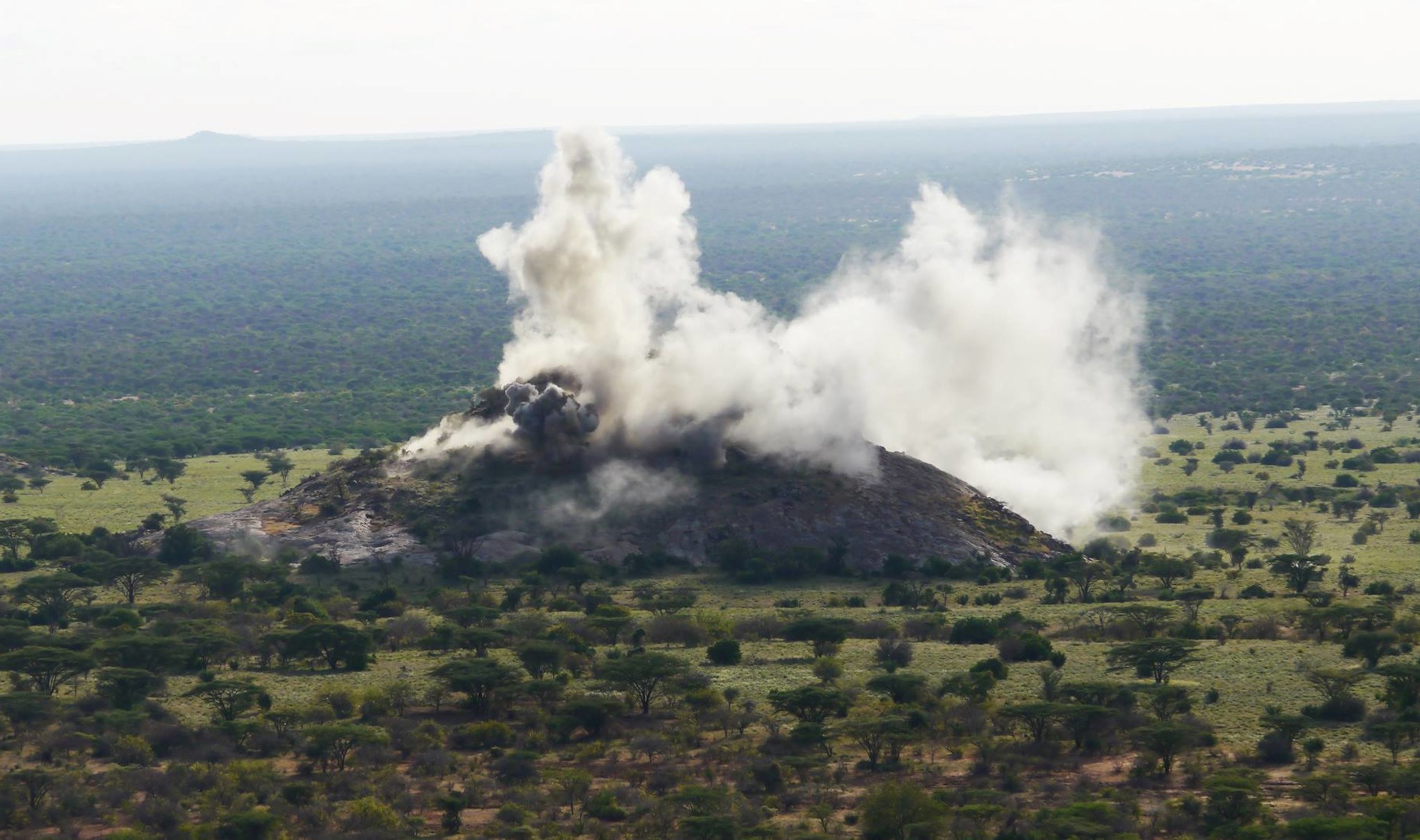British army admits to using white phosphorus in Kenya
The government has confirmed to Parliament that British troops have used a highly contentious incendiary weapon during training in Kenya.
-

British army admits to using white phosphorus in Kenya.
Defense Minister James Heappey announced today that UK soldiers used white phosphorus mortar rounds during training operations in Kenya "when conditions permitted their use."
He went on to say that it provided "illumination for night training as well as smoke screening reasons."
White phosphorus is not officially prohibited as a chemical weapon but shares similar effects. According to Human Rights Watch, it is "notorious for the severity of the injuries it causes" and "deeply burns human flesh."
“If fragments of white phosphorus enter the bloodstream, they can lead to multiple organ failure,” the group noted. “Already-dressed wounds can reignite when dressings are removed."
Many of its drills in the East African country take place on common land, which could indicate that the United Kingdom was targeting Kenyan residents with the chemical. According to an internal army study obtained by Declassified, live mortar firing occurs in regions "frequented by farmers, villagers, and nomadic tribes-people."
Kenny MacAskill MP, who uncovered its use in Kenya, said, “The dangers of white phosphorus are well documented and have caused injury and misery in many conflicts."
“That it should be used in training exercises near where civilians are located or through where they’ll pass is highly dangerous. It just shouldn’t be happening and the Ministry of Defence should cease this practice.”
Debris
The British army can conduct training exercises on a large scale in Kenya. Military operations in previous years have generated enough trash to fill more than a dozen shipping containers.
Not all discarded ammunition is recovered from training sites, posing a risk to neighboring residents.
MacAskill previously revealed that a 13-year-old Kenyan kid suffered lacerations and burns after discovering an unlit micro flare in January. According to the army, it was "consistent with British munitions that had been used in the area."
Lisoka Lesasuyan, a 13-year-old Kenyan kid, lost both arms and an eye in 2015 after picking up an unexploded mortar fuze. According to Labour MP Clive Lewis, the type of fuze was pulled from British army use in 2019 after it was discovered to contain the dangerous explosive chemical Tetryl.
Tetryl has the potential to disrupt the neurological, digestive, and respiratory systems. Its production in the United States was halted in 1973, and the Pentagon is destroying the remaining stocks.
‘Suspicions they’ve used chemicals’
Kelvin Kubai, a Kenyan lawyer who represents victims of British army crimes, told Declassified that he believes Tetryl and white phosphorus are causing health problems in the local community, including impaired vision.
“We’ve had suspicions for a long time that they’ve used chemicals during the training and now evidence is coming to light that confirms our worries,” Kubai commented.
“It’s astonishing that as recently as 2019, Tetryl was in use by the British army given its toxicological characteristics. Kenyan authorities and the community at large are being kept in the dark.”
He accused the British military of having an "unsustainable culture", noting that a treaty governing Britain's use of training grounds in Kenya was only recently amended to include a section allowing the host country to assess the environmental impact.
“I feel the British army has been taking advantage of the absence of such a monitoring law as a check on the use of their training fields. This law is being introduced quite late after British soldiers have already been training in Kenya for many years.”
As per an army official claims, "The British Army does not use white phosphorus mortar rounds as an incendiary weapon," because they are not aimed at civilians and serve primarily as lighting. Any incendiary effect appears to be coincidental, which further consolidates the western collateral damage theory.

 4 Min Read
4 Min Read








